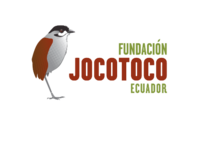Galapagos Island Eradication Impact Study


Ecosystem recovery from a large-scale eradication of invasive mammals on Floreana Island in the Galapagos
Project description
Floreana Island in the Galapagos archipelago, Ecuador had undergone an eradication of rats and control of cats in late 2023. The island is home to several unique and endemic species, including Lava lizards, Galapagos penguins, Marine Iguanas and much more. Floreana Island is the most negatively impacted island in the Galapagos by invasive species. Namely the introduction of cats and rats has led to a series of local species extinctions. Hence an island-wide eradication was planned to reduce the pressures from invasive species and help restore the island.
Island eradications are generally accomplished with largescale brodifacoum poisoning. Following this eradication, 13 locally extinct native species are planned for reintroduction to Floreana Island, to continue its restoration process. Although poisoning with brodifacoum in eradications is highly effective at removing invasive mammals, the toxin can bioaccumulate in the environment and non-target wildlife such as native birds and reptiles are subject to collateral mortality or accumulation of residue through trophic levels. This consequently puts multiple species at risk. Research shows there is uncertainty about the breakdown of brodifacoum following eradications and It’s transfer to the ecosystem and the repercussions of this have not been fully quantified. Additionally, reptiles who aren’t as susceptible to the toxin can be important vectors of toxic transfer, carrying toxic residue burdens, causing mortality in other wildlife, such as predatory birds. The Floreana lava lizard is a common food item for predators at higher trophic levels and is an important seed disperser on the island. Thus, it is predicted the eradication will reduce pressure on the lava lizards and promote their population growth, altering the food web structure for the Island with potential ecosystem impacts to follow.
This PhD project in partnership with Fundación de Conservación Jocotoco and funded by the Stifterverband aims to monitor the ecosystem impact of the toxic eradication on the island. Planned reintroductions of endangered predatory species such as Floreana mockingbirds, Galapagos hawks and Floreana racer snake will rely heavily on lizard populations as a source of food. As lizards are a key species on this island, the project will investigate lizard population response and the potential ecosystem effects from predicted population changes. The toxic residue burdens in other key native species and the movement of toxin in the food-web will also be investigated with brodifacoum residue and stable isotope analysis. An understanding of the determinants and pathways leading to the negative effects as well as the risks and repercussions involved with toxic eradication operations and the potential changes ecosystems can undergo is imperative for mitigating the effects of such large-scale toxic operations. This research aims to provide insights into the breakdown or accumulation of this toxin in the environment and the effects on reptile populations and their respective food webs. The project will also produce valuable data to inform and successfully implement a number of the native species reintroductions. The ultimate goal for this research is to improve the outcome of eradications and reintroductions on Floreana Island, as well as island eradication and eradication mitigation plans globally.
Duration:
2023-2026
Funding:
Zempelin-Stiftung (project number: T0214/43600_2/2023/sm)
Project cooperation:
Fundación de Conservación Jocotoco
Projektansprechpartner:



